
The Colors of the Four Seasons | Chinese Dressing Aesthetics
Color, is an important factor that constitutes the beauty of the art of dress. The ancients naturally did not ignore it. Classical Chinese dress colors originated from ancient times, as early as 18,000 years ago when the Beijing Cavemanused stone powder red to dye jewelry. For a long time, Chinese colors learned from the bright nature of birds' feathers, flowers, and so on, imitated the dyeing, and gradually became a system of its own, following the rules to use, expressing the transformation of seasons.
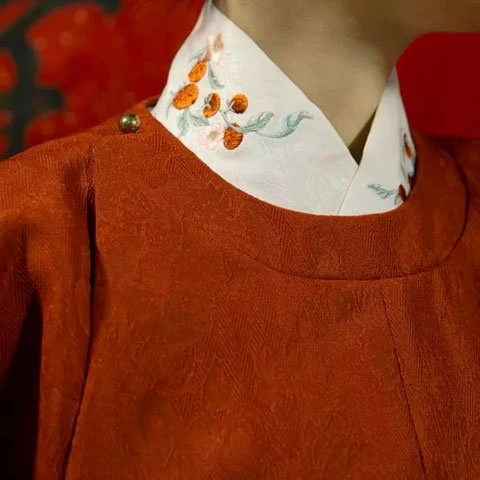
Rites of Zhou has recorded: "For painting, the five colors are mixed. The symbol of the east is called cyan, the symbol of the south is called red, the symbol of the west is called white, the symbol of the north is called black, the symbol of the sky is called Xuan (dark black), and the symbol of the earth is called yellow." The center is also yellow.
The colors of the Wuxing (五行, Five Elements) are yellow (earth, 土), white (metal, 金), cyan (wood, 木), red (fire, 火), black (water, 水), the colors of the four seasons are spring green, summer red, autumn white, winter Xuan, the colors can be harmonized with each other. This color theory symbolizes the movement of heaven and earth, the heavenly time, and the cycle of the universe.
In ancient times, the emperor's highest level of dress: Mianfu (冕服), on the application of the colors of the Wuxing.The emperor's spouse: the queen, there are six kinds of the highest standard of dress: ceremonial dresses, Huiyi (袆衣), Yudi (揄狄), Quedi (阙狄), Juyi (鞠衣), Tanyi (襢衣), Tuanyi (褖衣). The emperor's spouse: the queen, there are six kinds of the highest standard of dress: ceremonial dresses, public Di, Que Di, bow clothes, dresses, butcher's dresses, the brunette. Di (狄) refers to the Di bird(翟鸟, red-bellied pheasant), feathers are five colors together, so used to decorate the Huiyi, Yudi, Que Di.

By the Han Dynasty, emperors and empresses wore different colors of clothing according to different seasons. Later, women's four-season dress colors developed on the basis of this, constantly drawing on the natural colors of flowers, the sky, the sun and the moon, ice and snow, and neon.
Changing with the transformation of the seasons, it can be said that this is the soul of the classical color scheme: poetry, philosophy, and labor are all found in the colors. It is depicted in Tang poems and Song lyrics, ancient texts, and can be seen in paintings.
The Colors of the Four Seasons | Wear Nature on the Body
Hundreds of colors were used for women's dresses, and a variety of traditional color dyeing methods were listed in books such as the Yuan Dynasty's "The Complete Collection of Things You Must Use at Home (居家必用事类全集)" and the Ming Dynasty's Song Yingxing's "Tiangong Kaiwu (天工开物)". Dyeing with bluegrass, Rubia cordifolia, and other grasses is called grass dyeing. Dyeing with ores such as cinnabar is called stone dyeing. All of them have specialized techniques.
Let's start by getting to know the ten traditional Chinese colors: color of Quchen (麹尘色), color of peach red (桃红色), color of true red (真红色), color of plum red (梅红色), color of pomegranate red (石榴红), color of begonia red (海棠红), color of Roulan (揉蓝色), color of Yujin (郁金色), color of goose yellow (鹅黄色), color of snow (雪色).
In ancient times, they were changed on the empresses, on the working women, according to the seasons, praising the virtues of Chinese women, uniting solemn rituals, reflecting the philosophy of the unity of heaven and man, with a beautiful poetic meaning.
Quchen, the light yellow-green fungal color born on the wine bent, is also the yellow-green color of the first sprouts of mulberry and willow leaves. It is the color of the ancient empress's Juyi, which she wore in spring when she worshiped the gods of silkworms and personally picked mulberry leaves to raise silkworms. Ancient women love to use the color of mulberry leaves for their dresses in spring.
Peach red is also known as peach blossom color. Spring peach blossom is delicate and charming, the ladies will use the Rubia cordifolia, with red flowers dyed this color, wear on the body.
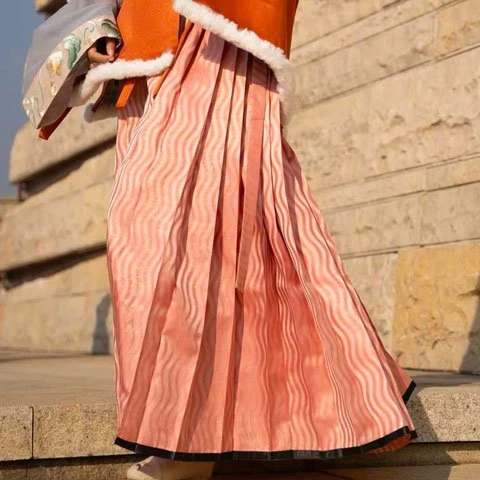
True red is obtained by dyeing with cinnabar, the purest and brightest red color, also called Zhuhong (朱红). The best cinnabar must be selected and finely crushed into powder before it can be dyed. As early as the Shang and Zhou periods, this dyeing method was already popular, and the Zhuhong silk robe (朱红罗袍) excavated from the Mawangdui No. 1 Han tomb in Changsha, Hunan Province are good examples.
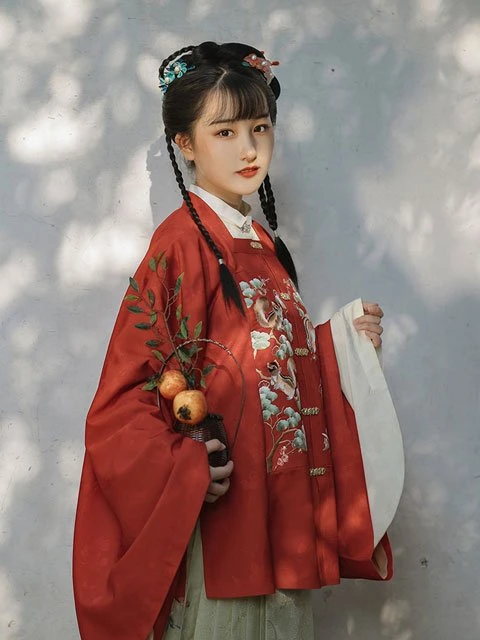
Plum red is also dyed with Rubia cordifolia, and red flowers, and is the color of red plum blossoms, worn in winter to compete with plums blossoms. Ancient poets often mentioned plum blossoms in their poems, showing the status of plum blossoms in the hearts of the ancients.
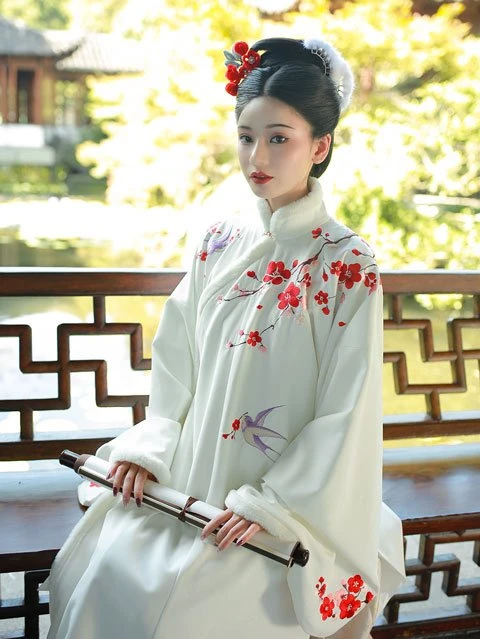
In summer, when pomegranate blossoms are like fire, women wear this color to express their inner passion.
Begonia red is a slightly purplish vivid red, like a begonia in full bloom, it is very beautiful.
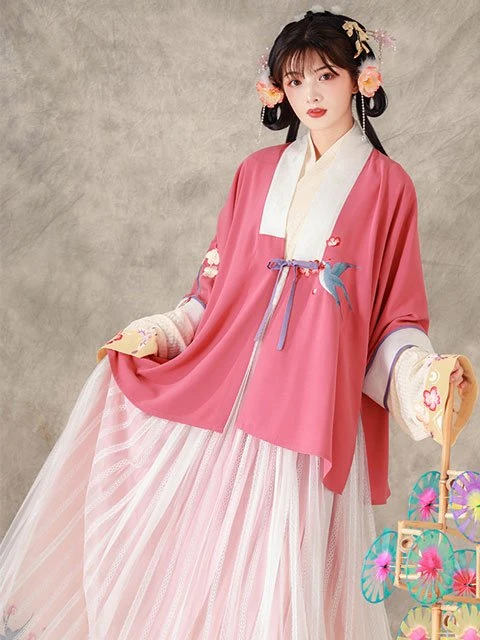
Blue, called cyan in ancient times, is dyed with indigo like sky blue, treasure blue, emerald blue, and other colors. There is a kind of Roulan, which is named because of the hand kneading bluegrass to get juice for dyeing. Yuan dynasty "agriculture mulberry clothing food summary (农桑衣食撮要)" contains boiling bluegrass to get juice with hand kneading grass, and then add other processes.
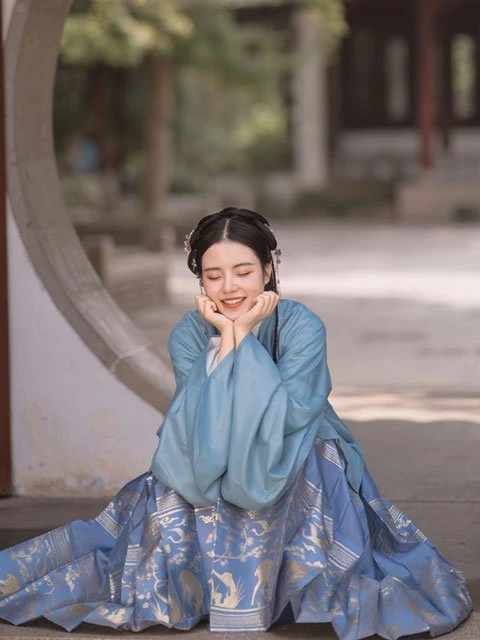
Yujin, a medicinal herb that can be dyed with a vivid, fragrant golden color, was deeply loved by people.
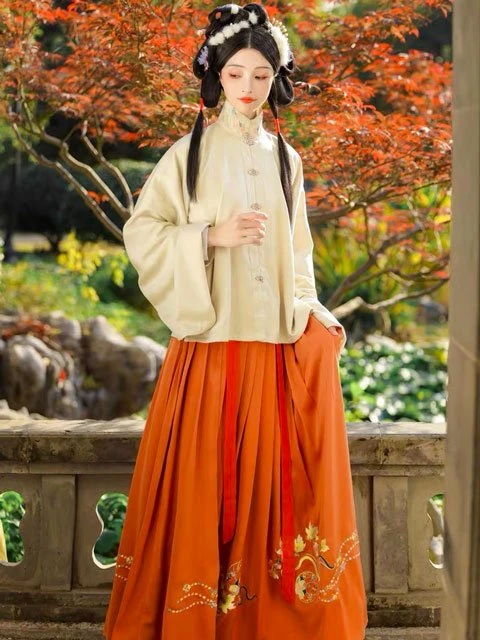
Goose yellow is the color of the yellow fuzzy goose, which is most bright and charming. The woman in the mural painting of the tomb of Princess Xincheng of the Tang Dynasty wears a yellow Ruqun, so let's use this color to represent goose yellow.
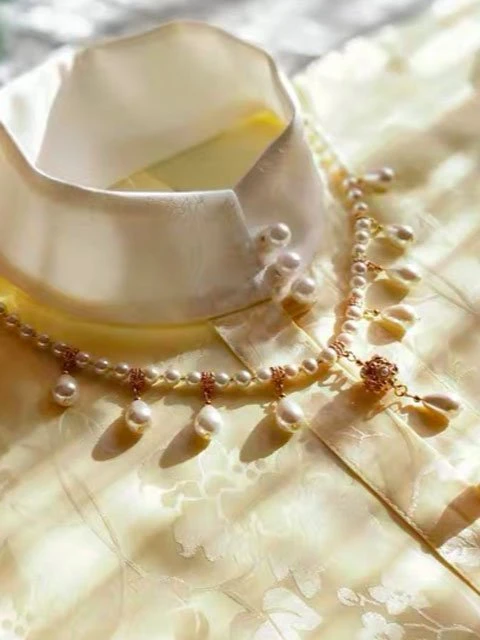
Snow color is white, symbolizing moonlight, ice snow, beautiful jade, white flowers, bright and lovely. To be worn when enjoying plum, snow, and moon.
The Colors of the Four Seasons | Patterns Hidden in the Fabric
Phoenix and bird pattern:
The phoenix and bird patterns (凤鸟纹) have been around for a long time, and for hundreds of years, people have used them to decorate and beautify their lives and express their emotions and interests. As early as 6,000 to 7,000 years ago in the Neolithic period, the primitive ancestors depicted bird motifs on various kinds of painted pottery, showing a high level of art, and in the Shang and Zhou periods, phoenix motifs replaced bird motifs and appeared on bronze vessels in a form of authority, because phoenixes have various forms in people's consciousness.
The shape of the phoenix pattern is mostly like flying with wings and strutting with head held high, which is quite majestic, vigorous, and dynamic, showing the social spirit of national strength, well-being and stability.
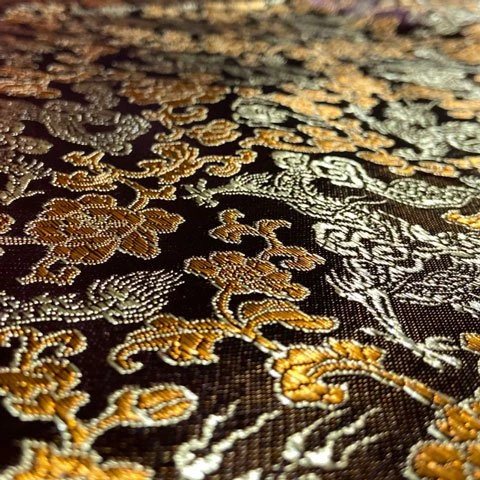
Curly grass pattern:
The curly grass pattern (卷草纹) is one of the traditional Chinese patterns, named after its curly pattern of flowers and plants, which has the meaning of vitality. The pattern takes the main elements of flowers and plants such as lonicera, lotus, orchids, and peonies, and absorbs the designs of composite flowers and wrap-around flowers, and then arranges them in an "S" shaped wave-like curve to form a two-sided continuous pattern.
Because of its rounded shape, it is commonly known as the "curly grass pattern", and because of its prevalence in the Tang Dynasty, it is also known as the Tang grass pattern.
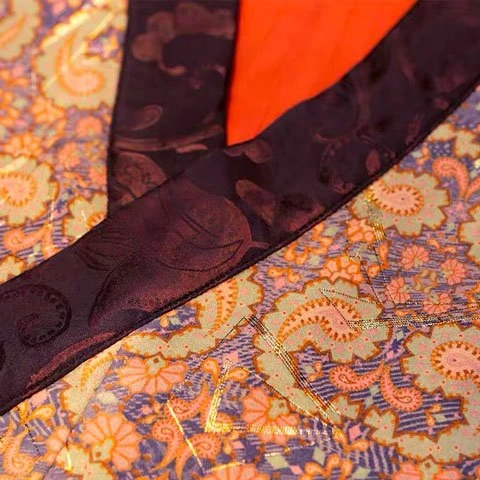
Shengse Hua pattern:
Shengse Hua pattern (生色花) is a kind of traditional Chinese decorative pattern, which is a representative pattern popular in the Southern Song Dynasty, and is mostly found in the decorative patterns of porcelain, textiles, and murals of the Song Dynasty and later.
The "Shengse Hua" pattern is a single branch flower with a flower head and leaves, which is taken as a material through sketching, and then arranged in a plane to maintain the vivid and realistic shape and growth dynamics as a unit pattern.
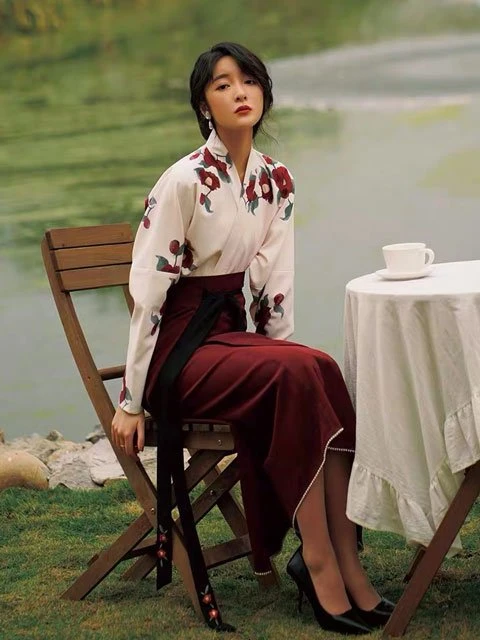
Wrap-around pattern:
The basic composition of the wrap-around pattern is based on the stem of a certain vine, twisted in a corrugated or gyrating shape, with leaves, flowers, or fruits, most of which are highlighted with flowers or fruits as the thematic elements.
The wrap-around pattern is the most expressive and integrative representative botanical pattern of the Ming Dynasty, as it adapted to the needs of the economic life and secular culture of the time, incorporating a cheerful and successful auspicious symbolism in the form of twisting and turning composition.
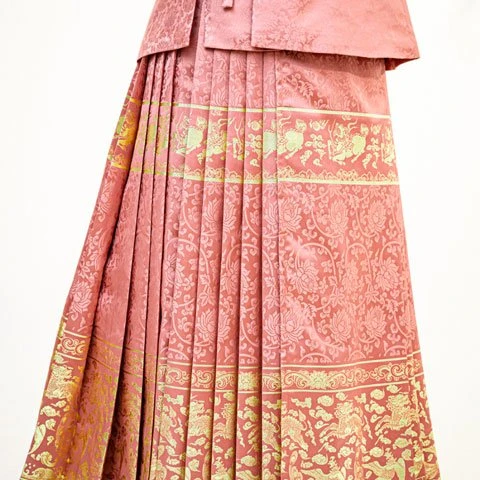
The above is about traditional Chinese colors and pattern applied to Hanfu, more about wearing Hanfu can be viewed here.
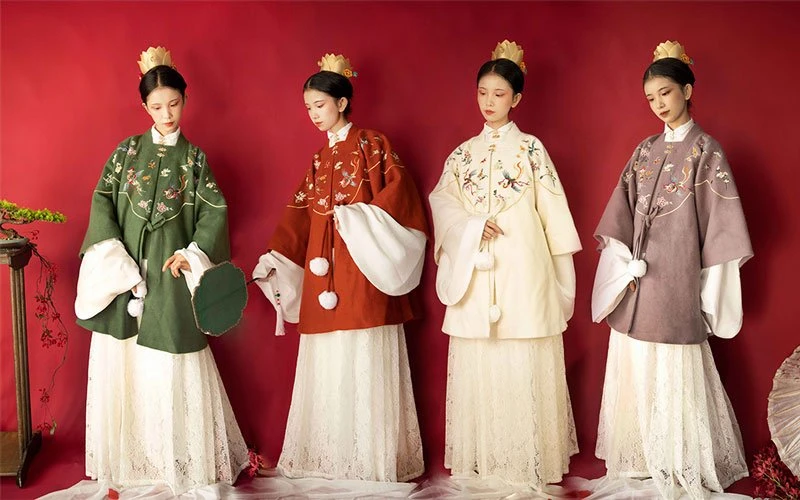
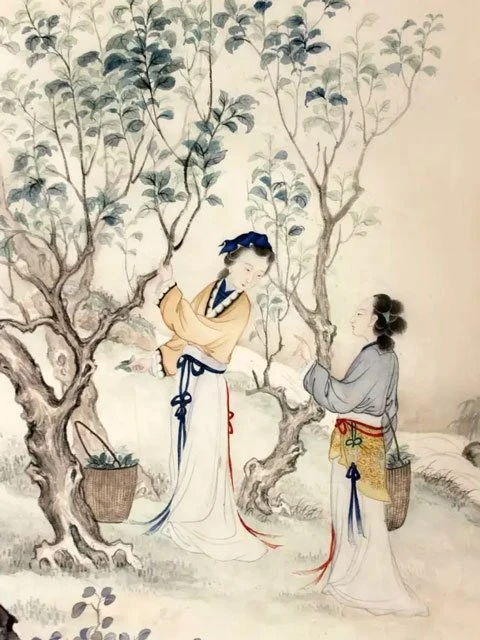

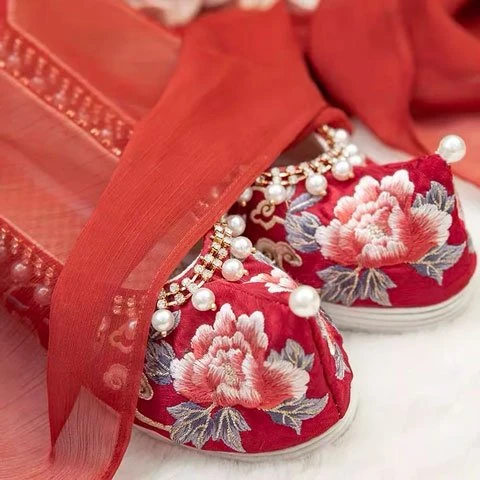
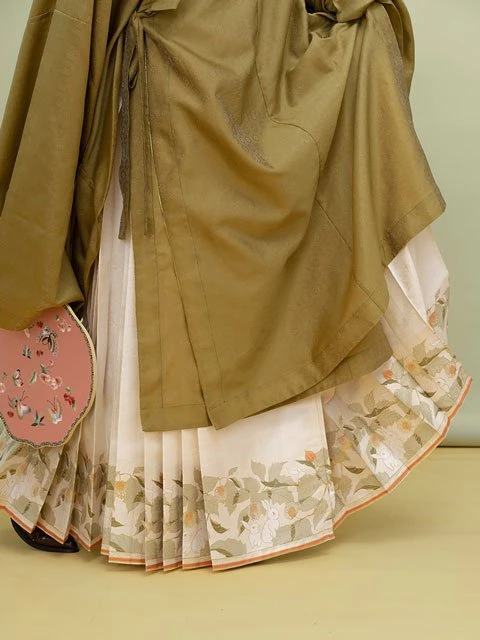
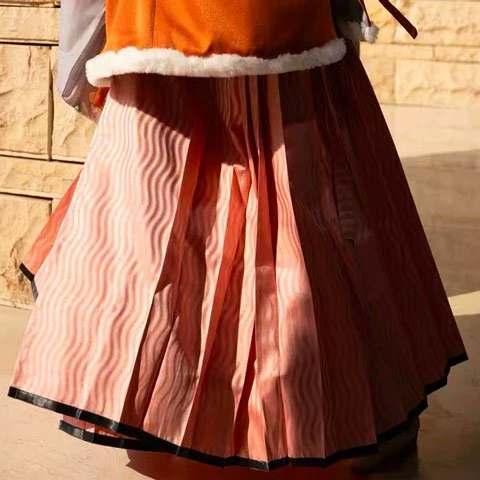
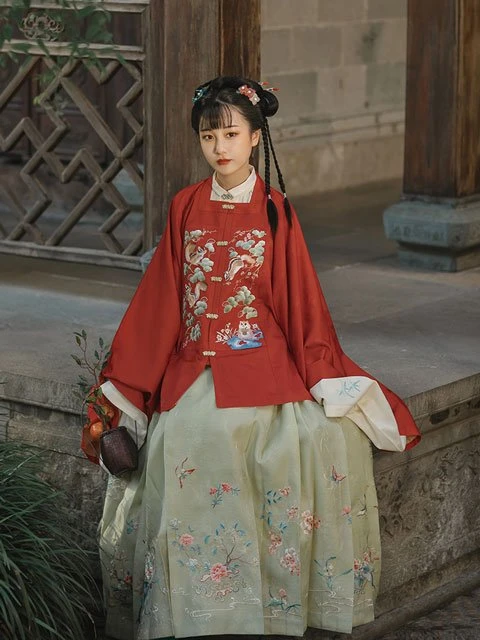
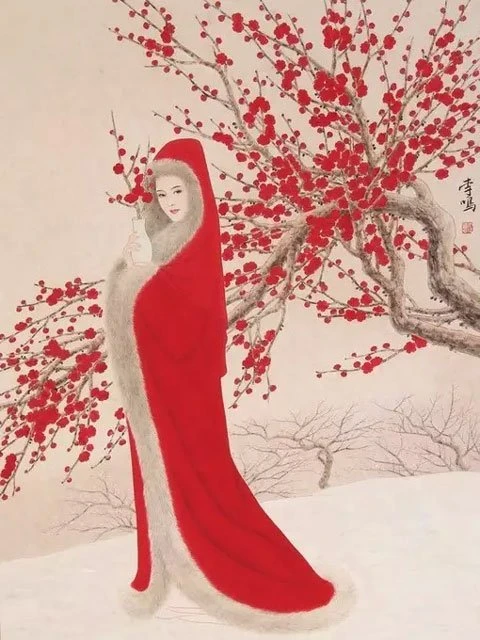
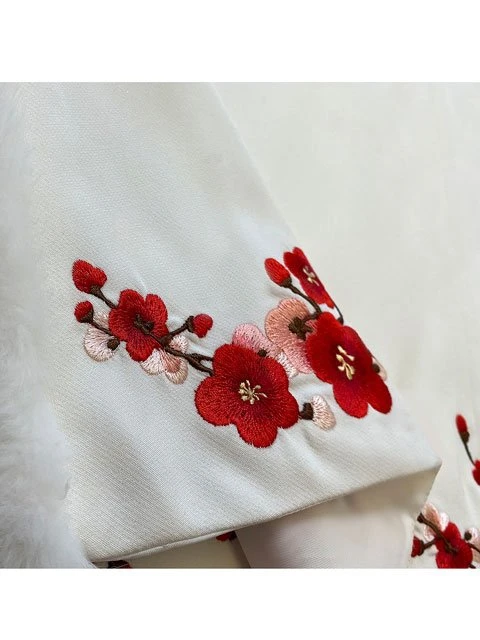
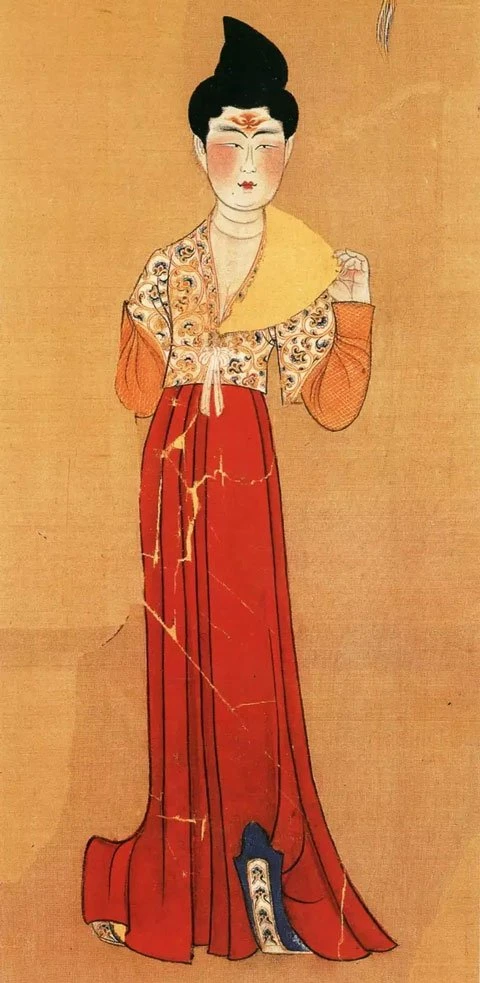
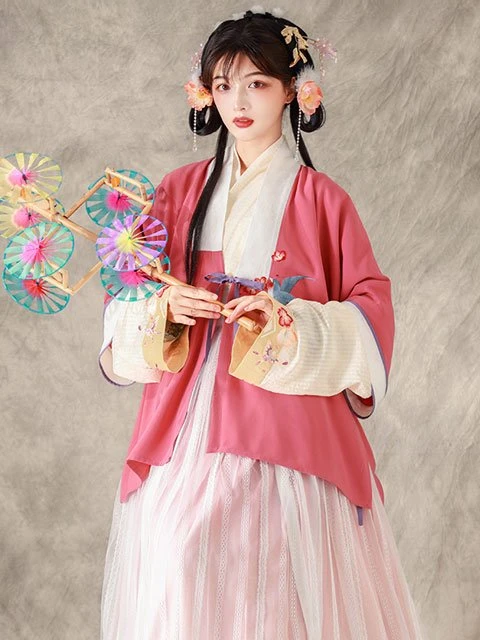
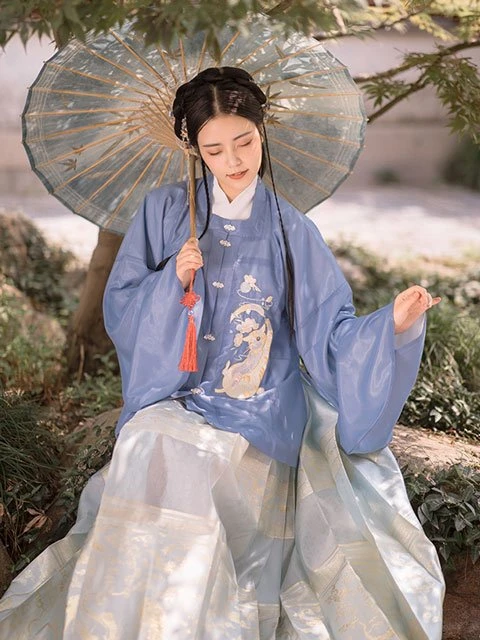
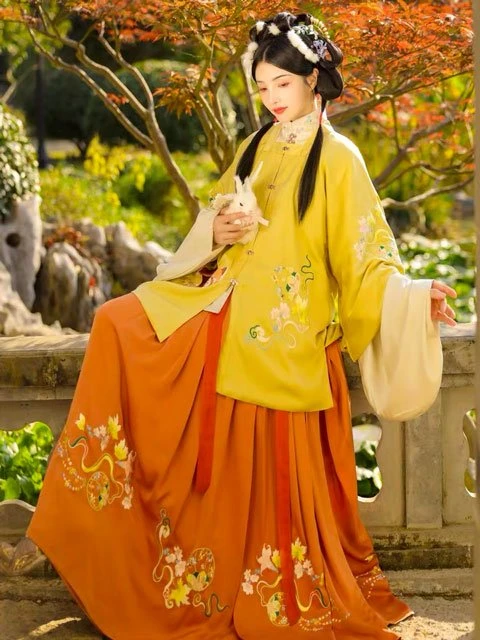
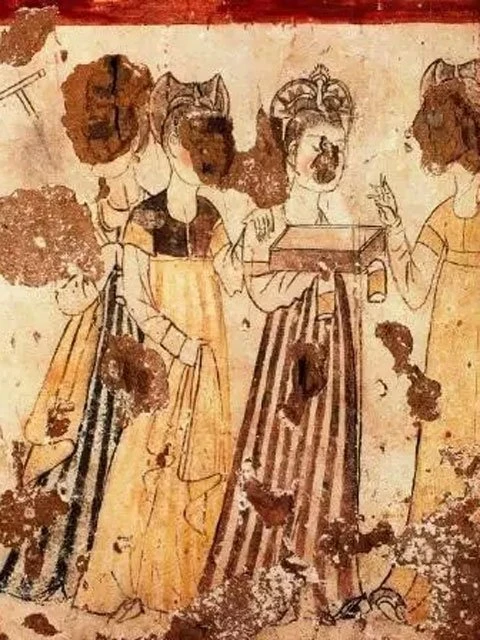
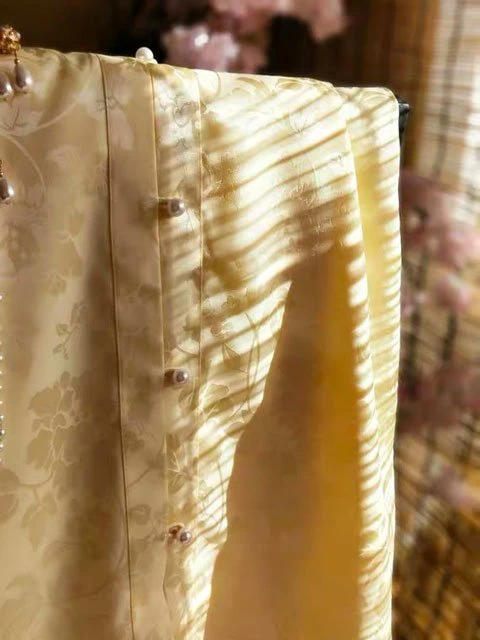
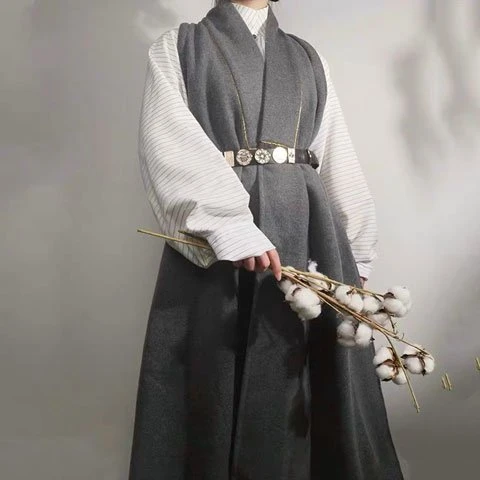

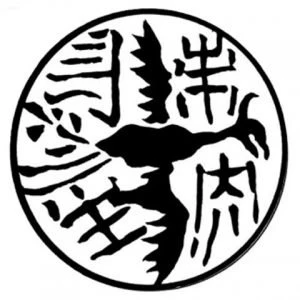
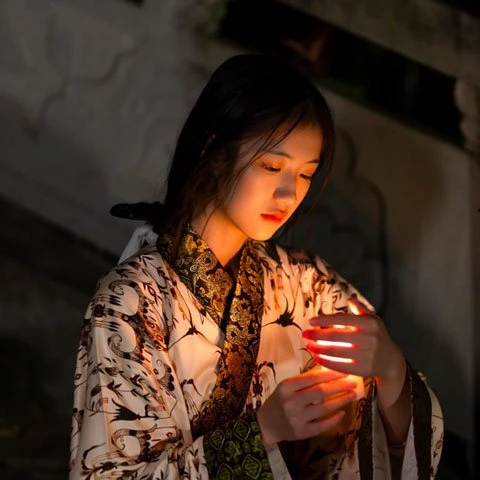
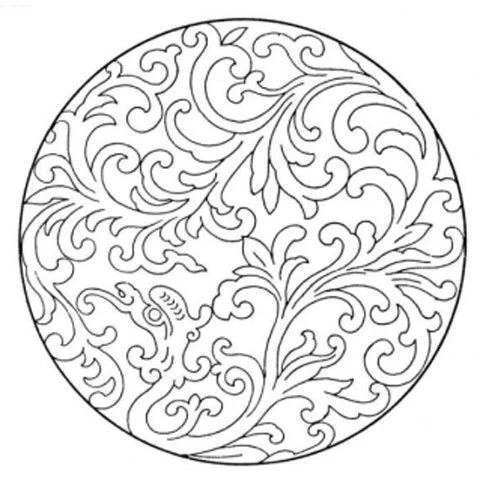
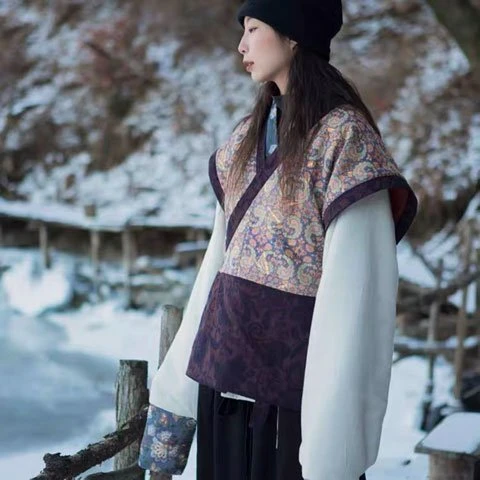
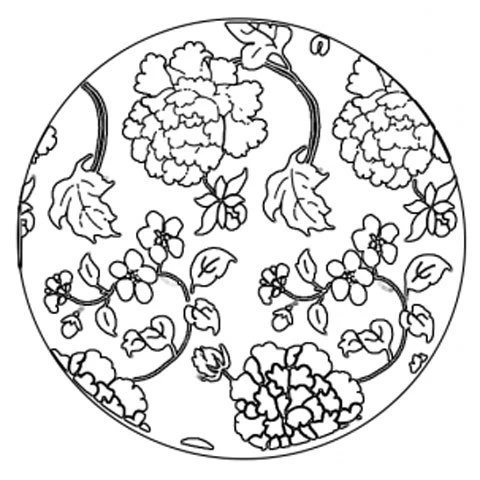
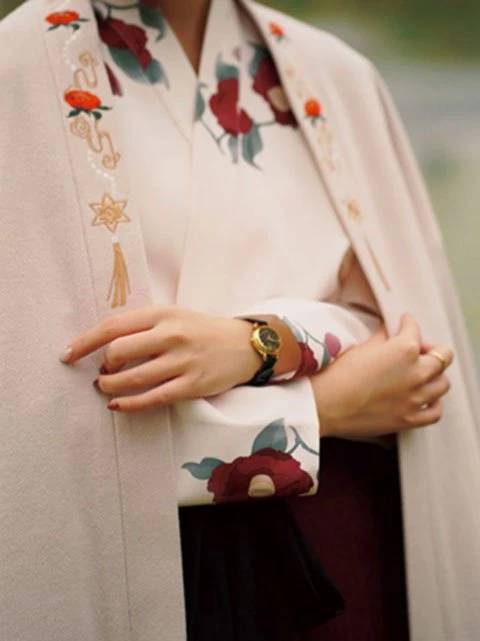
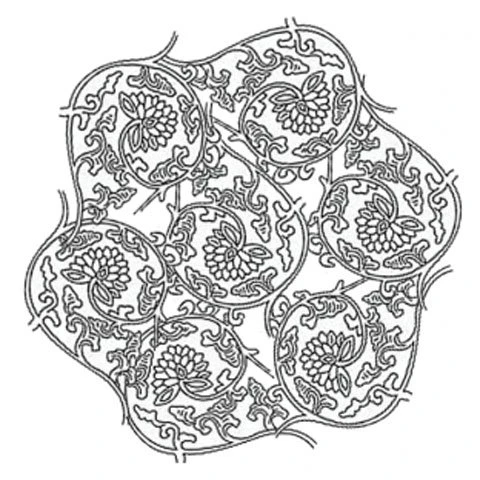
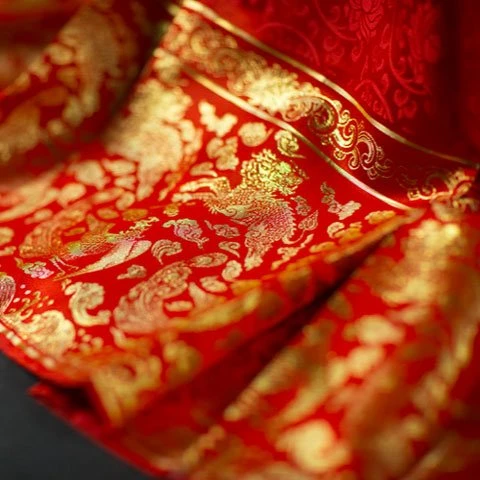

This is so pretty and also cool to know!
waw😍
Love the plum blossom embroidery! Also, aren't Yujin tulips? Or is it some kind of botanical subtleties, like it's a genus but not a particular species... :p
Verry beautiful
Great job I really loved the article 😍
fav is snow 🙂
this is really informative and the pictures are really pretty!